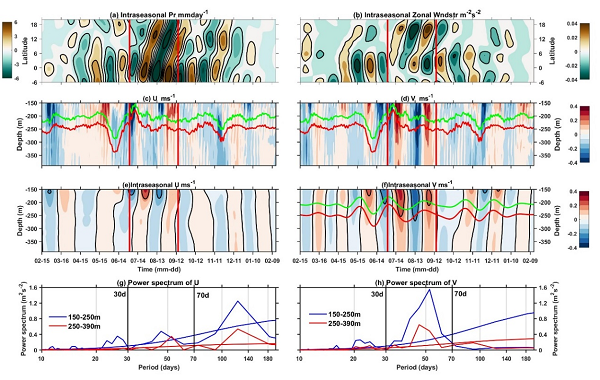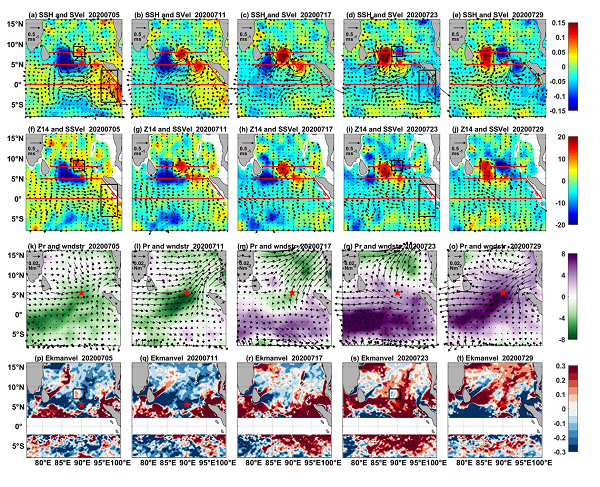Program
Recently,theMarine Intelligent Observation Technology Innovation Center, MNR, the State Key Laboratory of Satellite Ocean Environment Dynamics, and the Key Laboratory of Marine Ecosystem Dynamics, MNR of the SecondInstitute of Oceanography (SIO)jointly published the research paper “Strong subsurface meridional current forced by monsoon intraseasonal oscillation in the southern Bay of Bengal during summer 2020” onthe internationally renowned journalEnvironmental Research Letters (IF 6.3). This paper is another high-level research achievement of the “Joint Advanced Marine and Ecological Studies (JAMES)” research program initiated bythe SIO. Based on the flow field data ofmooring buoy deployed in the East Indian Ocean, the mechanism ofthe influence ofMonsoon Intraseasonal Oscillation (MISO)on the subsurfacecurrent in the southern Bay of Bengal by stimulating both remote and local ocean Rossby waves is proposed. The research results provide a new idea for the study of regional air-sea interaction and help improve the prediction ability ofclimate model. Dr. Ding Ruibin is the first author of the paper,researcher Zhou Feng is the corresponding author,and the co-authors include researcher Xuan Jiliang, Dr. Ma Xiao, researcher Li Hongliang, researcher Huang Daji, senior engineer Zhang Taozheng, senior engineer Li Jia, senior engineer Zhang Deng, Dr. Yu Yue, and Dr. Han Chenhua, as well as associate researcher Huang Ke from the South China Sea Institute of Oceanology, CAS and associate researcher Sun Jia from the First Institute of Oceanography.
The meridional current in the southern Bay of Bengal (BOB) exhibits prominent intraseasonal variability (ISV), which exerts a critical influence on meridional mass and energy exchange. However, its relationship with the northward propagating monsoon intraseasonal oscillation (MISO), which is the predominant variability in the tropical Indian Ocean during summer, is not well understood. Using a one-year mooring deployed at 5.5 °N, 90 °E, a strong ISV of the meridional current is observed between 150 and 250 m during summer, exhibiting amplitudes exceeding 0.4 ms-1 and periods of 30-70 d. Further analysis shows that the summer ISV is forced by a strong MISO event with the following dynamic processes. The MISO first drives the zonal wind stress at the equator, leading to the equatorial Kelvin wave and the reflected equatorial Rossby wave at 5 °N. Then, the MISO propagates northward and generates local wind stress curl-induced Ekman pumping near the mooring site, leading to the subsequent off-equatorial Rossby wave at 8 °N. As a result, the synergy of the remotely- and locally-forced Rossby wave causes strong subsurface ISV in southern BOB. The above process is described in Figure 2.

Figure 1Presentation of wind field, rainfall and mooring flow field results in southern BOB in 2020

Figure 2. Display of ISV process of atmosphere and ocean inthe East Indian Oceaninsummer in 2020
Paper Citation:
[1]Ding R, Xuan J, Zhou F*, Ma X, Li H, Huang K, Huang D, Sun J, Zhang T, Li J, Zhang D, Yu Y and Han C, 2023. Strong subsurface meridional current forced by monsoon intraseasonal oscillation in the southern Bay of Bengal during summer 2020. Environmental Research Letters. 18 (5), 054004, doi:10.1088/1748-9326/accafd.



